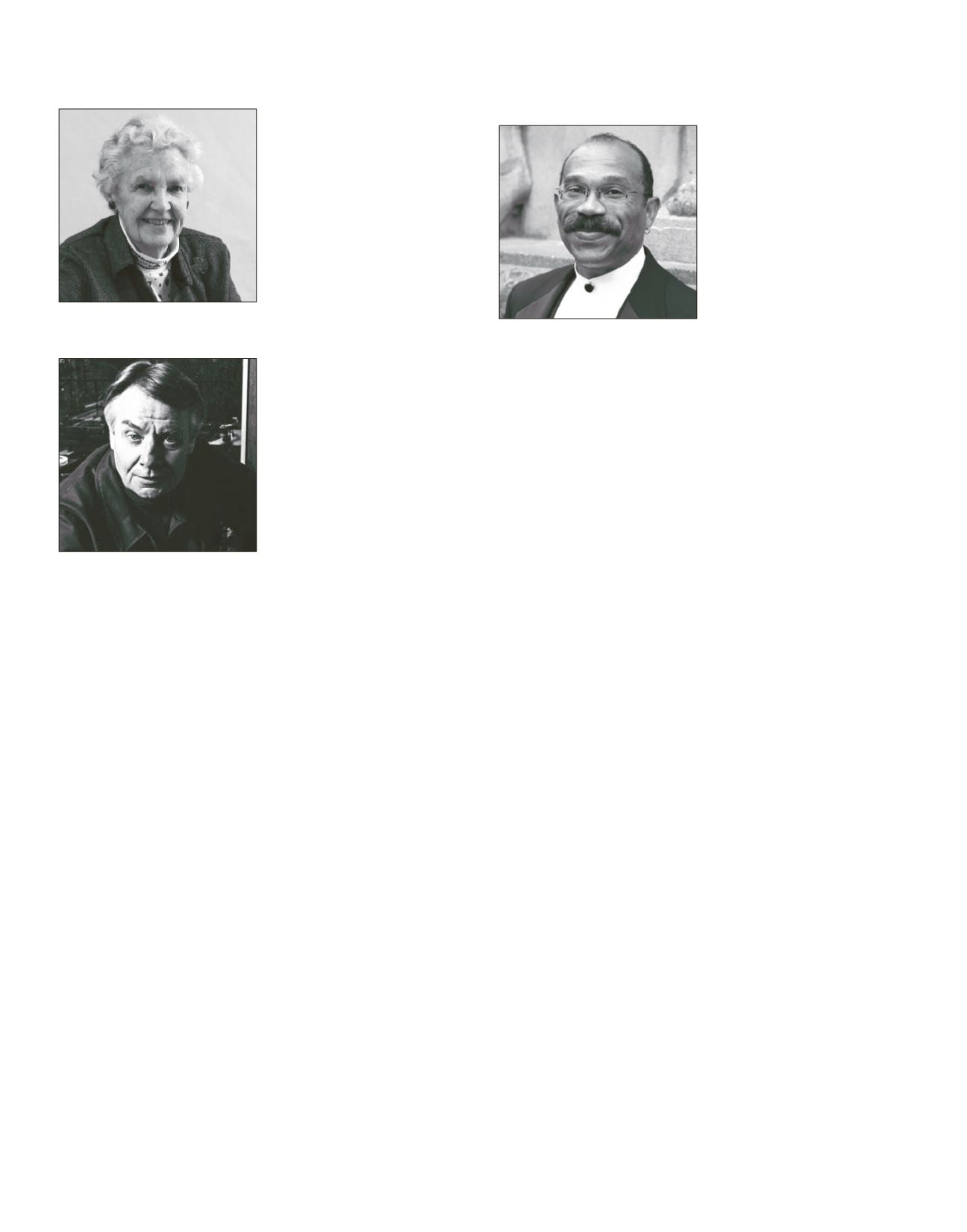

ALICE
PAR.ER(b. 1924) RO%ERT SHA: (1916–99), arrs.
“I Want to Die Easy”
From the
Ainsworth Psalter
of
,
one of the earliest songbooks to ap-
pear in the American colonies, on
through the collection of
Southern
Harmony
from the
s and into
the vast collection of hymnals of
every color, stripe, and denomi-
nation available today, one can see
that Americans of every race and
creed have never been ashamed to
express their a rmation of deep
faith through the medium of song.
Conductor Robert Shaw’s and Alice
Parker’s countless arrangements of
folk songs, spirituals, and hymns—
in every language and style—re-
main popular with choruses today
not only because of their immedi-
acy and appeal but also due to the
singability, the simple sophistica-
tion of the harmonies and counter-
point, the desire to communicate to
“scholar and civilian” alike. Written
for a tenor soloist with accompany-
ing chorus, “I Want to Die Easy” is
exempli ed by a slow, relaxed tem-
po, “easy” swung triplets in the re-
peated interjections of the chorus,
and a slow build-up to a corporate
cry for salvation near its end. is is
clearly the song of a slave who has toiled in the elds and is ready to cross
over into the next world.
I want to die easy when I die
Shout salvation as I y
I want to die easy when I die.
I want to see my Jesus when I die
Shout salvation as I y
I want to see my Jesus when I die.
I want to go to heaven when I die
Shout salvation as I y
I want go to heaven when I die.
JAMES WOODIE ALEXANDER JESSE
:HITA.ER“Straight Street”
(arranged by Joseph Jennings)
Several pieces stand out as quint-
essential “Chanticleer” songs from
its
-year history: Franz Biebl’s
Ave Maria
is on almost everyone’s
list, with “Dúlamán” and “Straight
Street” coming in very close to the
top. Introduced to the ensemble by
Joseph Jennings in the
s, at a
time when Chanticleer was begin-
ning to incorporate di erent genres
of music into its repertory, “Straight
Street” was originally the creation of
J.W. Alexander and Jesse Whitaker,
two members of the classic gospel
ensemble the Pilgrim Travelers.
Dubbed “gospel’s rst showmen,” the Pilgrim Travelers were formed in
Houston in the late
s, one of several traveling gospel ensembles in the
United States, but their immensely popular percussive foot tapping (which
ended up being miked) and solid lead vocals set them apart as one of the
most popular and successful.
eir wild church performances saw them
running o stage and up the aisles in order to, in the words of Alexander,
“pull the sisters out of their seats.” Between
and
, the Pilgrim Trav-
elers recorded over
sides on Specialty Records. “Straight Street” ( )
proved to be one of the group’s most signi cant recordings, embodying
both the walking-in-rhythm sound and spiritual essence that were so un-
mistakably the soul of the Pilgrim Travelers. During their reign, they in u-
enced such singers as Ray Charles, Lou Rawls, and Sam Cooke.
Well, I used to live up on Broadway
Right next to a old liar’s house
My number was self righteousness
Had very little guide of mouth
So I moved, I had to move
And I’m living on Straight Street now.
One day my heart got troubled
All about my dwelling place
I saw the Lord ‘round my settlement
And He told me to leave that place
So I moved, I had to move
And I’m living on Straight Street now.
Oh since I moved, I’m really living
I got peace within.
I thank the Lord for ev’ry blessing
I’m glad I found new friends.
Before I moved over here
Let me tell you how it was with me
Old Satan had me bound up
And I had no liberty
So I moved, I had to move
And I’m living on Straight Street now.
–Program notes provided by Chanticleer
AOLFH 3DUNHU
Robert Shaw
Joseph Jennings
RAVINIA MAGAZINE | JULY 30 – AUGUST 5, 2018
108









